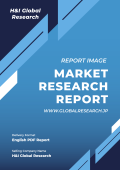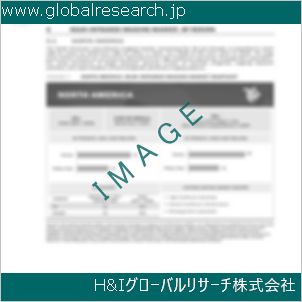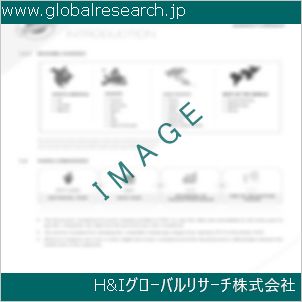1. Executive Summary
1.1. Global Market Outlook
1.2. Summary of Statistics
1.3. Key Market Characteristics & Attributes
1.4. Analysis and Recommendations
2. Market Overview
2.1. Market Coverage
2.2. Market Definition
3. Market Risks and Trends Assessment
3.1. Risk Assessment
3.1.1. COVID-19 Crisis and Impact on In-vitro Toxicology Testing Demand
3.1.2. COVID-19 Impact Benchmark with Previous Crisis
3.1.3. Impact on Market Value (US$ Mn)
3.1.4. Assessment by Key Countries
3.1.5. Assessment by Key Market Segments
3.1.6. Action Points and Recommendation for Suppliers
3.2. Key Trends Impacting the Market
3.3. Formulation and Product Development Trends
4. Market Background
4.1. In-vitro Toxicology Testing Market, by Key Countries
4.2. In-vitro Toxicology Testing Market Opportunity Assessment (US$ Mn)
4.2.1. Total Available Market
4.2.2. Serviceable Addressable Market
4.2.3. Serviceable Obtainable Market
4.3. Market Scenario Forecast
4.3.1. Demand in optimistic Scenario
4.3.2. Demand in Likely Scenario
4.3.3. Demand in Conservative Scenario
4.4. Investment Feasibility Analysis
4.4.1. Investment in Established Markets
4.4.1.1. In Short Term
4.4.1.2. In Long Term
4.4.2. Investment in Emerging Markets
4.4.2.1. In Short Term
4.4.2.2. In Long Term
4.5. Forecast Factors – Relevance & Impact
4.5.1. Top Companies Historical Growth
4.5.2. Growth in Automation, By Country
4.5.3. In-vitro Toxicology Testing Adoption Rate, By Country
4.6. Market Dynamics
4.6.1. Market Driving Factors and Impact Assessment
4.6.2. Prominent Market Challenges and Impact Assessment
4.6.3. In-vitro Toxicology Testing Market Opportunities
4.6.4. Prominent Trends in the Global Market & Their Impact Assessment
5. Key Success Factors
5.1. Manufacturers’ Focus on Low Penetration High Growth Markets
5.2. Banking on with Segments High Incremental Opportunity
5.3. Peer Benchmarking
6. Global In-vitro Toxicology Testing Market Demand Analysis 2017-2021 and Forecast, 2022-2032
6.1. Historical Market Analysis, 2017-2021
6.2. Current and Future Market Projections, 2022-2032
6.3. Y-o-Y Growth Trend Analysis
7. Global In-vitro Toxicology Testing Market Value Analysis 2017-2021 and Forecast, 2022-2032
7.1. Historical Market Value (US$ Mn) Analysis, 2017-2021
7.2. Current and Future Market Value (US$ Mn) Projections, 2022-2032
7.2.1. Y-o-Y Growth Trend Analysis
7.2.2. Absolute $ Opportunity Analysis
8. Global In-vitro Toxicology Testing Market Analysis 2017-2021 and Forecast 2022-2032, By Method
8.1. Introduction / Key Findings
8.2. Historical Market Size (US$ Mn) Analysis By Method, 2017-2021
8.3. Current and Future Market Size (US$ Mn) Analysis and Forecast By Method, 2022-2032
8.3.1. Cellular Assay
8.3.1.1. Live Cells
8.3.1.2. Fixed Cells
8.3.2. Biochemical Assay
8.3.3. In-Silico
8.3.4. Ex-vivo
8.4. Market Attractiveness Analysis By Method
9. Global In-vitro Toxicology Testing Market Analysis 2017-2021 and Forecast 2022-2032, By End-use
9.1. Introduction / Key Findings
9.2. Historical Market Size (US$ Mn) Analysis By End-use, 2017-2021
9.3. Current and Future Market Size (US$ Mn) Analysis and Forecast By End-use, 2022-2032
9.3.1. Pharmaceutical Industry
9.3.2. Cosmetics & Household Products
9.3.3. Academic Institutes and Research Laboratories
9.3.4. Diagnostics
9.3.5. Chemical Industry
9.3.6. Food Industry
9.4. Market Attractiveness Analysis By End-use
10. Global In-vitro Toxicology Testing Market Analysis 2017-2021 and Forecast 2022-2032, By Technology
10.1. Introduction / Key Findings
10.2. Historical Market Size (US$ Mn) Analysis By Technology, 2017-2021
10.3. Current and Future Market Size (US$ Mn) Analysis and Forecast By Technology, 2022-2032
10.3.1. Cell Culture Technology
10.3.2. High Throughput Technology
10.3.3. Molecular Imaging
10.3.4. OMICS Technology
10.4. Market Attractiveness Analysis By Technology
11. Global In-vitro Toxicology Testing Market Analysis 2017-2021 and Forecast 2022-2032, By Application
11.1. Introduction / Key Findings
11.2. Historical Market Size (US$ Mn) Analysis By Application, 2017-2021
11.3. Current and Future Market Size (US$ Mn) Analysis and Forecast By Application, 2022-2032
11.3.1. Systemic Toxicology
11.3.2. Dermal Toxicity
11.3.3. Endocrine Disruption
11.3.4. Occular Toxicity
11.3.5. Other Applications
11.4. Market Attractiveness Analysis By Application
12. Global In-vitro Toxicology Testing Market Analysis 2017-2021 and Forecast 2022-2032, By Region
12.1. Introduction
12.2. Historical Market Size (US$ Mn) Analysis By Region, 2017-2021
12.3. Current Market Size (US$ Mn) & Analysis and Forecast By Region, 2022-2032
12.3.1. North America
12.3.2. Latin America
12.3.3. Europe
12.3.4. Asia Pacific
12.3.5. Middle East and Africa (MEA)
12.4. Market Attractiveness Analysis By Region
13. North America In-vitro Toxicology Testing Market Analysis 2017-2021 and Forecast 2022-2032
13.1. Introduction
13.2. Pricing Analysis
13.3. Historical Market Value (US$ Mn) Trend Analysis By Market Taxonomy, 2017-2021
13.4. Market Value (US$ Mn) & Forecast By Market Taxonomy, 2022-2032
13.4.1. By Country
13.4.1.1. U.S.
13.4.1.2. Canada
13.4.1.3. Rest of North America
13.4.2. By Method
13.4.3. By End-use
13.4.4. By Application
13.4.5. By Technology
13.5. Market Attractiveness Analysis
13.5.1. By Country
13.5.2. By Method
13.5.3. By End-use
13.5.4. By Application
13.5.5. By Technology
14. Latin America In-vitro Toxicology Testing Market Analysis 2017-2021 and Forecast 2022-2032
14.1. Introduction
14.2. Pricing Analysis
14.3. Historical Market Value (US$ Mn) Trend Analysis By Market Taxonomy, 2017-2021
14.4. Market Value (US$ Mn) & Forecast By Market Taxonomy, 2022-2032
14.4.1. By Country
14.4.1.1. Brazil
14.4.1.2. Mexico
14.4.1.3. Rest of Latin America
14.4.2. By Method
14.4.3. By End-use
14.4.4. By Application
14.4.5. By Technology
14.5. Market Attractiveness Analysis
14.5.1. By Country
14.5.2. By Method
14.5.3. By End-use
14.5.4. By Application
14.5.5. By Technology
15. Europe In-vitro Toxicology Testing Market Analysis 2017-2021 and Forecast 2022-2032
15.1. Introduction
15.2. Pricing Analysis
15.3. Historical Market Value (US$ Mn) Trend Analysis By Market Taxonomy, 2017-2021
15.4. Market Value (US$ Mn) & Forecast By Market Taxonomy, 2022-2032
15.4.1. By Country
15.4.1.1. Germany
15.4.1.2. France
15.4.1.3. U.K.
15.4.1.4. Italy
15.4.1.5. Benelux
15.4.1.6. Nordic Countries
15.4.1.7. Rest of Europe
15.4.2. By Method
15.4.3. By End-use
15.4.4. By Application
15.4.5. By Technology
15.5. Market Attractiveness Analysis
15.5.1. By Country
15.5.2. By Method
15.5.3. By End-use
15.5.4. By Application
15.5.5. By Technology
16. Asia Pacific In-vitro Toxicology Testing Market Analysis 2017-2021 and Forecast 2022-2032
16.1. Introduction
16.2. Pricing Analysis
16.3. Historical Market Value (US$ Mn) Trend Analysis By Market Taxonomy, 2017-2021
16.4. Market Value (US$ Mn) & Forecast By Market Taxonomy, 2022-2032
16.4.1. By Country
16.4.1.1. China
16.4.1.2. Japan
16.4.1.3. South Korea
16.4.1.4. Rest of Asia Pacific
16.4.2. By Method
16.4.3. By End-use
16.4.4. By Application
16.4.5. By Technology
16.5. Market Attractiveness Analysis
16.5.1. By Country
16.5.2. By Method
16.5.3. By End-use
16.5.4. By Application
16.5.5. By Technology
17. Middle East and Africa In-vitro Toxicology Testing Market Analysis 2017-2021 and Forecast 2022-2032
17.1. Introduction
17.2. Pricing Analysis
17.3. Historical Market Value (US$ Mn) Trend Analysis By Market Taxonomy, 2017-2021
17.4. Market Value (US$ Mn) & Forecast By Market Taxonomy, 2022-2032
17.4.1. By Country
17.4.1.1. GCC Countries
17.4.1.2. South Africa
17.4.1.3. Turkey
17.4.1.4. Rest of Middle East and Africa
17.4.2. By Method
17.4.3. By End-use
17.4.4. By Application
17.4.5. By Technology
17.5. Market Attractiveness Analysis
17.5.1. By Country
17.5.2. By Method
17.5.3. By End-use
17.5.4. By Application
17.5.5. By Technology
18. Key Countries In-vitro Toxicology Testing Market Analysis 2017-2021 and Forecast 2022-2032
18.1. Introduction
18.1.1. Market Value Proportion Analysis, By Key Countries
18.1.2. Global Vs. Country Growth Comparison
18.2. US In-vitro Toxicology Testing Market Analysis
18.2.1. Value Proportion Analysis by Market Taxonomy
18.2.2. Value Analysis and Forecast by Market Taxonomy, 2017-2032
18.2.2.1. By Method
18.2.2.2. By End-use
18.2.2.3. By Application
18.2.2.4. By Technology
18.3. Canada In-vitro Toxicology Testing Market Analysis
18.3.1. Value Proportion Analysis by Market Taxonomy
18.3.2. Value Analysis and Forecast by Market Taxonomy, 2017-2032
18.3.2.1. By Method
18.3.2.2. By End-use
18.3.2.3. By Application
18.3.2.4. By Technology
18.4. Mexico In-vitro Toxicology Testing Market Analysis
18.4.1. Value Proportion Analysis by Market Taxonomy
18.4.2. Value Analysis and Forecast by Market Taxonomy, 2017-2032
18.4.2.1. By Method
18.4.2.2. By End-use
18.4.2.3. By Application
18.4.2.4. By Technology
18.5. Brazil In-vitro Toxicology Testing Market Analysis
18.5.1. Value Proportion Analysis by Market Taxonomy
18.5.2. Value Analysis and Forecast by Market Taxonomy, 2017-2032
18.5.2.1. By Method
18.5.2.2. By End-use
18.5.2.3. By Application
18.5.2.4. By Technology
18.6. Germany In-vitro Toxicology Testing Market Analysis
18.6.1. Value Proportion Analysis by Market Taxonomy
18.6.2. Value Analysis and Forecast by Market Taxonomy, 2017-2032
18.6.2.1. By Method
18.6.2.2. By End-use
18.6.2.3. By Application
18.6.2.4. By Technology
18.7. France In-vitro Toxicology Testing Market Analysis
18.7.1. Value Proportion Analysis by Market Taxonomy
18.7.2. Value Analysis and Forecast by Market Taxonomy, 2017-2032
18.7.2.1. By Method
18.7.2.2. By End-use
18.7.2.3. By Application
18.7.2.4. By Technology
18.8. Italy In-vitro Toxicology Testing Market Analysis
18.8.1. Value Proportion Analysis by Market Taxonomy
18.8.2. Value Analysis and Forecast by Market Taxonomy, 2017-2032
18.8.2.1. By Method
18.8.2.2. By End-use
18.8.2.3. By Application
18.8.2.4. By Technology
18.9. BENELUX In-vitro Toxicology Testing Market Analysis
18.9.1. Value Proportion Analysis by Market Taxonomy
18.9.2. Value Analysis and Forecast by Market Taxonomy, 2017-2032
18.9.2.1. By Method
18.9.2.2. By End-use
18.9.2.3. By Application
18.9.2.4. By Technology
18.10. UK In-vitro Toxicology Testing Market Analysis
18.10.1. Value Proportion Analysis by Market Taxonomy
18.10.2. Value Analysis and Forecast by Market Taxonomy, 2017-2032
18.10.2.1. By Method
18.10.2.2. By End-use
18.10.2.3. By Application
18.10.2.4. By Technology
18.11. Nordic Countries In-vitro Toxicology Testing Market Analysis
18.11.1. Value Proportion Analysis by Market Taxonomy
18.11.2. Value Analysis and Forecast by Market Taxonomy, 2017-2032
18.11.2.1. By Method
18.11.2.2. By End-use
18.11.2.3. By Application
18.11.2.4. By Technology
18.12. China In-vitro Toxicology Testing Market Analysis
18.12.1. Value Proportion Analysis by Market Taxonomy
18.12.2. Value Analysis and Forecast by Market Taxonomy, 2017-2032
18.12.2.1. By Method
18.12.2.2. By End-use
18.12.2.3. By Application
18.12.2.4. By Technology
18.13. Japan In-vitro Toxicology Testing Market Analysis
18.13.1. Value Proportion Analysis by Market Taxonomy
18.13.2. Value Analysis and Forecast by Market Taxonomy, 2017-2032
18.13.2.1. By Method
18.13.2.2. By End-use
18.13.2.3. By Application
18.13.2.4. By Technology
18.14. South Korea In-vitro Toxicology Testing Market Analysis
18.14.1. Value Proportion Analysis by Market Taxonomy
18.14.2. Value Analysis and Forecast by Market Taxonomy, 2017-2032
18.14.2.1. By Method
18.14.2.2. By End-use
18.14.2.3. By Application
18.14.2.4. By Technology
18.15. GCC Countries In-vitro Toxicology Testing Market Analysis
18.15.1. Value Proportion Analysis by Market Taxonomy
18.15.2. Value Analysis and Forecast by Market Taxonomy, 2017-2032
18.15.2.1. By Method
18.15.2.2. By End-use
18.15.2.3. By Application
18.15.2.4. By Technology
18.16. South Africa In-vitro Toxicology Testing Market Analysis
18.16.1. Value Proportion Analysis by Market Taxonomy
18.16.2. Value Analysis and Forecast by Market Taxonomy, 2017-2032
18.16.2.1. By Method
18.16.2.2. By End-use
18.16.2.3. By Application
18.16.2.4. By Technology
18.17. Turkey In-vitro Toxicology Testing Market Analysis
18.17.1. Value Proportion Analysis by Market Taxonomy
18.17.2. Value Analysis and Forecast by Market Taxonomy, 2017-2032
18.17.2.1. By Method
18.17.2.2. By End-use
18.17.2.3. By Application
18.17.2.4. By Technology
18.17.3. Competition Landscape and Player Concentration in the Country
19. Market Structure Analysis
19.1. Market Analysis by Tier of Companies
19.2. Market Concentration
19.3. Market Share Analysis of Top Players
19.4. Market Presence Analysis
19.4.1. By Regional footprint of Players
19.4.2. Product footprint by Players
20. Competition Analysis
20.1. Competition Dashboard
20.2. Competition Benchmarking
20.3. Competition Deep Dive
20.3.1. MERCK KGAA
20.3.1.1. Overview
20.3.1.2. Product Portfolio
20.3.1.3. Sales Footprint
20.3.1.4. Strategy Overview
20.3.2. CHARLES RIVER
20.3.2.1. Overview
20.3.2.2. Product Portfolio
20.3.2.3. Sales Footprint
20.3.2.4. Strategy Overview
20.3.3. BIO-RAD LABORATORIES, INC.
20.3.3.1. Overview
20.3.3.2. Product Portfolio
20.3.3.3. Sales Footprint
20.3.3.4. Strategy Overview
20.3.4. ABBOTT
20.3.4.1. Overview
20.3.4.2. Product Portfolio
20.3.4.3. Sales Footprint
20.3.4.4. Strategy Overview
20.3.5. THERMO FISHER SCIENTIFIC INC.
20.3.5.1. Overview
20.3.5.2. Product Portfolio
20.3.5.3. Sales Footprint
20.3.5.4. Strategy Overview
20.3.6. CATALENT, INC.
20.3.6.1. Overview
20.3.6.2. Product Portfolio
20.3.6.3. Sales Footprint
20.3.6.4. Strategy Overview
20.3.7. GE HEALTHCARE
20.3.7.1. Overview
20.3.7.2. Product Portfolio
20.3.7.3. Sales Footprint
20.3.7.4. Strategy Overview
20.3.8. QUEST DIAGNOSTICS INCORPORATED
20.3.8.1. Overview
20.3.8.2. Product Portfolio
20.3.8.3. Sales Footprint
20.3.8.4. Strategy Overview
20.3.9. EUROFINS SCIENTIFIC
20.3.9.1. Overview
20.3.9.2. Product Portfolio
20.3.9.3. Sales Footprint
20.3.9.4. Strategy Overview
20.3.10. LABORATORY CORPORATION OF AMERICA HOLDINGS
20.3.10.1. Overview
20.3.10.2. Product Portfolio
20.3.10.3. Sales Footprint
20.3.10.4. Strategy Overview
20.3.11. EVOTEC
20.3.11.1. Overview
20.3.11.2. Product Portfolio
20.3.11.3. Sales Footprint
20.3.11.4. Strategy Overview
20.3.12. CREATIVE BIOARRAY
20.3.12.1. Overview
20.3.12.2. Product Portfolio
20.3.12.3. Sales Footprint
20.3.12.4. Strategy Overview
20.3.13. GENTRONIX
20.3.13.1. Overview
20.3.13.2. Product Portfolio
20.3.13.3. Sales Footprint
20.3.13.4. Strategy Overview
20.3.14. BIOIVT
20.3.14.1. Overview
20.3.14.2. Product Portfolio
20.3.14.3. Sales Footprint
20.3.14.4. Strategy Overview
20.3.15. SGS SA
20.3.15.1. Overview
20.3.15.2. Product Portfolio
20.3.15.3. Sales Footprint
20.3.15.4. Strategy Overview
20.3.16. AGILENT TECHNOLOGIES
20.3.16.1. Overview
20.3.16.2. Product Portfolio
20.3.16.3. Sales Footprint
20.3.16.4. Strategy Overview
21. Assumptions and Acronyms Used
22. Research Methodology
❖ 免責事項 ❖
http://www.globalresearch.jp/disclaimer












